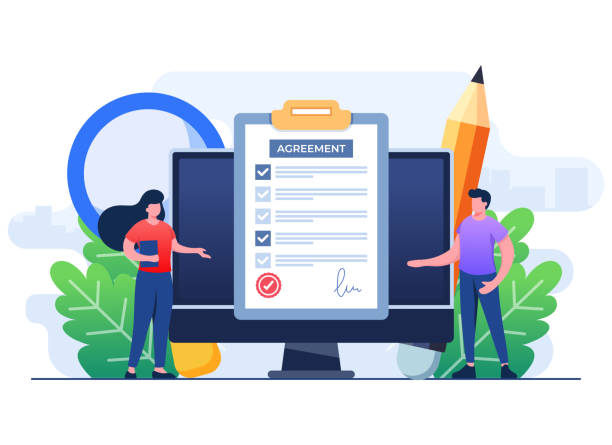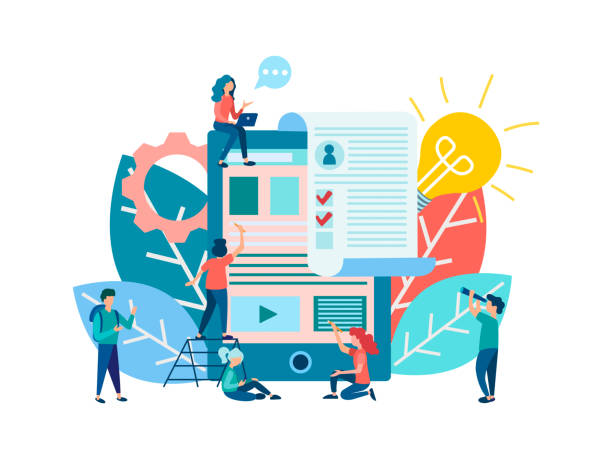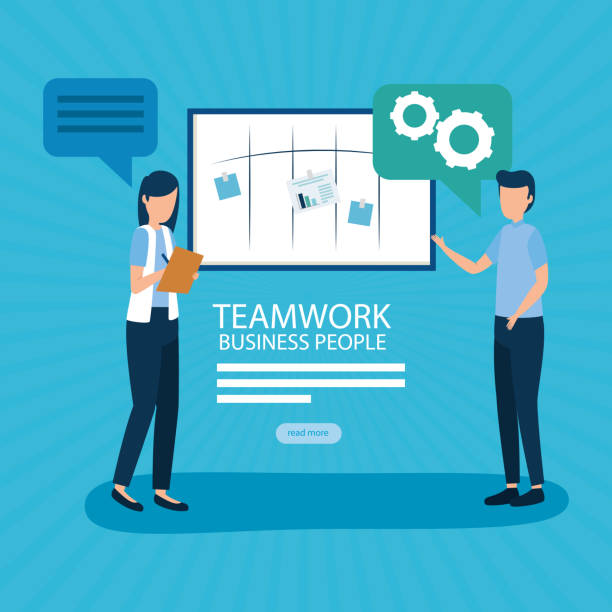Why Do You Need a Personal Website? Advantages and Goals
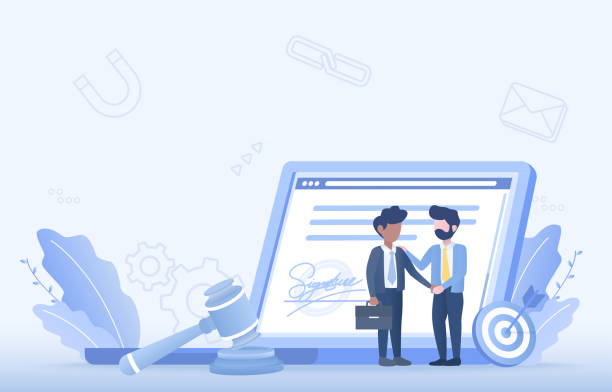
In the current digital age, having a strong #OnlinePresence is no longer a luxury choice, but a necessity.
#PersonalWebsiteDesign is considered a fundamental step towards establishing your digital identity.
This platform provides a unique space for you to showcase your skills, experiences, projects, and achievements in a professional and organized manner.
One of the biggest advantages of a personal website is your complete control over the content and how it’s presented. Unlike social media networks which have their own rules and limitations, your website is your digital canvas, and you can shape it however you wish.
This explanatory approach helps you understand how a personal website can act as a powerful tool for personal branding and professional development.
It’s not just an online resume; it’s a living, dynamic portfolio that is constantly growing and evolving.
A personal website can be an excellent tool for #Networking.
Imagine you meet someone at a conference and want to show them your work; instead of sending multiple emails or directing them to scattered social media profiles, simply providing your website address allows you to present a comprehensive and complete picture of yourself.
This website can act as a hub for all your online activities.
If you write a blog, produce podcasts, or participate in freelance projects, you can gather all of these in one place.
This content convergence enables your audience to easily access all aspects of your work, thereby increasing their engagement and recognition of you.
Furthermore, a personal website enhances your #Credibility.
When an employer, potential client, or colleague is looking for you, seeing a professional and up-to-date website indicates your seriousness and commitment to your profession.
This is especially crucial for freelancers, artists, writers, and professionals seeking to attract new clients or projects.
This platform allows you to tell your story beyond the limitations of traditional resumes, showcasing your personality and passion.
Many people seek specialized guidance for their #PersonalWebsiteDesign to achieve the best results.
This highlights the importance of precise planning and proper execution.
Ultimately, having a personal website allows you to attract targeted traffic, be seen in search results, and discover new opportunities for growth and advancement.
This is a long-term investment in your professional future that will yield significant returns.
Is your company’s website as professional and trustworthy as it should be? With specialized corporate website design by Rasawp, create an online presence that reflects your credibility and attracts more customers.
✅ Build a powerful and professional image for your brand
✅ Convert visitors into real customers
⚡ Get a free consultation now!
Planning and Strategy for Building Your Website
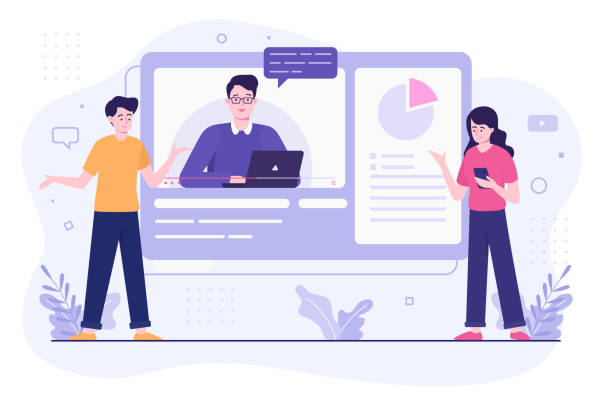
Before any practical action for #PersonalWebsiteDesign, the planning and strategy formulation stage is of vital importance.
This specialized stage helps you define your path and prevent future confusion.
First, you must clearly define your goals.
Is this website for portfolio display? For offering services? For blogging and knowledge sharing? Or a combination of these? The answers to these questions will shape the structure and content of your website. After defining your goals, identify your target audience.
Who will visit your website? Employers, clients, students, or the general public? Understanding the needs and interests of your audience will assist you in choosing the tone, design style, and type of content.
The next stage involves planning the site structure or #Sitemap.
This includes defining main pages (such as Homepage, About Me, Services/Portfolio, Contact Us, Blog) and related sub-pages.
A logical and user-friendly structure improves visitor experience and encourages them to spend more time on your site.
At this stage, you should also consider choosing an appropriate Domain Name.
Your domain should be short, memorable, and relevant to your name or personal brand.
Searching for available domains and registering them is an important step in the process of designing and #CreatingAPersonalPortal.
Using keywords related to your field of work in the domain name can help improve SEO.
Budgeting is also a crucial part of this strategic phase.
How much do you want to invest in hosting, domain, theme, plugins, and potentially assistance from web designers? Deciding whether you want to build your website from scratch or use Content Management Systems (CMS) like WordPress depends on your budget and technical skills.
This explanatory stage provides you with a comprehensive view of future needs and prevents wasted time and resources.
Finally, planning for future website maintenance and content updates should also be considered.
A living and dynamic website is one that is regularly updated with new and fresh content.
This includes planning for content creation, publishing blog articles, and updating your portfolio.
This strategy establishes a solid foundation for success in #BuildingYourPersonalWebsite.
Choosing the Right Platform and Tools for Website Building

After completing the planning stage, it’s time to choose the appropriate tools and platforms for your #PersonalWebsiteDesign.
This is a specialized decision that will greatly impact the ease of construction, flexibility, and capabilities of your website.
There are numerous options in the market, from popular Content Management Systems (CMS) like WordPress to easy website builders like Wix and Squarespace, and even manual coding for more professional individuals.
The choice of platform should be based on your needs, technical skills, and budget.
#WordPress is the most popular choice for building a personal website due to its high flexibility, large user community, and thousands of themes and plugins.
This is an excellent #Educational tool for beginners to advanced users.
In contrast, website builders like Wix and Squarespace offer a visual and drag-and-drop approach, which is ideal for those with little technical knowledge.
These platforms usually include hosting and domain, making the process much simpler.
However, they might have limitations in terms of customization and SEO.
For individuals seeking full control and advanced capabilities, manual coding with HTML, CSS, JavaScript, and frameworks like React or Vue.js can be an option, but this approach requires significant technical knowledge.
Below, a comparative table of the most popular platforms is provided to help you make a better choice:
| Platform Name | Ease of Use | Flexibility/Customization | Cost (Initial) | Technical Knowledge Required |
|---|---|---|---|---|
| WordPress (Self-Hosted) | Moderate to High | Very High | Moderate (Host and Domain) | Moderate |
| Wix | Very Easy | Moderate | Moderate (Subscription Plans) | Low |
| Squarespace | Easy | Moderate to High | Moderate to High (Subscription Plans) | Low |
| Manual Coding | Very Difficult | Full | Low (Host and Domain only) | Very High |
After choosing the platform, you should consider selecting a reliable #Hosting and purchasing a domain.
Choosing suitable hosting for your personal website design is crucial, as site loading speed and security heavily depend on the hosting quality.
Checking bandwidth, disk space, technical support, and pricing are among the important factors in choosing hosting.
Also, look for a theme that is both visually appealing and provides the functionalities you need.
A responsive theme that displays well on various devices is essential.
This specialized guide helps you make informed decisions for the technical foundations of your website and choose the right path for your #WebsiteDesignAndDevelopment from the start.
UI/UX Design Principles and User Experience in Personal Websites
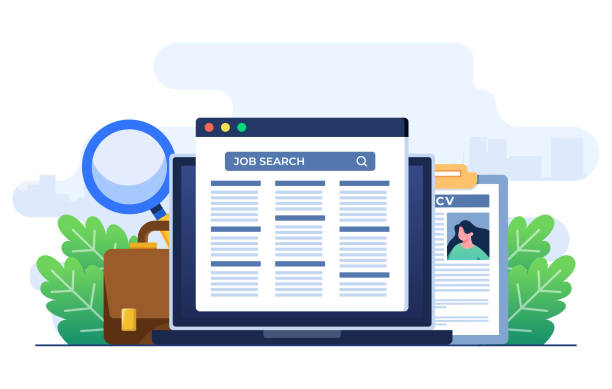
After choosing the platform, it’s time for one of the most crucial aspects of #PersonalWebsiteDesign: User Interface (UI) and User Experience (UX) design.
These two concepts, though related, have fundamental differences.
#UI deals with the appearance and visual elements of your website (colors, fonts, layout), while #UX focuses on users’ feelings and experiences when interacting with the site (ease of navigation, access to information).
The main goal in UX design is to create a positive and seamless experience for visitors so they can easily access the information they need and engage with your content.
This is an analytical approach that helps you view your website from the user’s perspective.
One of the key principles in UX design is simplicity and intuitive navigation. Navigation menus should be clear and understandable, allowing users to access any part of the site with just a few clicks.
Using a logical hierarchical structure for content and clear naming for links and buttons significantly improves user experience.
Also, website loading speed plays a very important role in UX.
Websites that load slowly cause users to leave prematurely.
Optimizing images, using efficient code, and choosing suitable hosting all help increase site speed.
In the UI section, using a harmonious color palette, readable fonts, and neat, balanced layouts is essential for creating a professional and attractive appearance.
Responsive Design is also vital; your website should display well on all types of devices, from desktops to tablets and mobile phones.
Personal website design should also reflect your personality and personal brand.
Using high-quality images, relevant videos, and engaging visual content can distinguish your website from competitors.
Providing a clear Call to Action (CTA) on key pages is also very important; for example, if your goal is to attract clients, “Contact Me” or “Order Project” buttons should be clearly visible.
Continuous testing and optimization are also important aspects of UX.
By using analytical tools like Google Analytics, you can monitor user behavior and identify your website’s strengths and weaknesses.
This specialized approach allows you to improve the user experience over time and make your website more efficient.
Remember that #WebsiteDesign is not just about its beauty, but also about its effective functionality and guiding users towards your goal.
Are you dissatisfied with the low conversion rate of visitors to customers on your e-commerce site?
Solve this problem forever with professional e-commerce website design by Rasawp!
✅ Increase visitor-to-customer conversion rate
✅ Create an excellent user experience and gain customer trust
⚡ Get a free consultation
Content Production Strategy and the Importance of Blogging
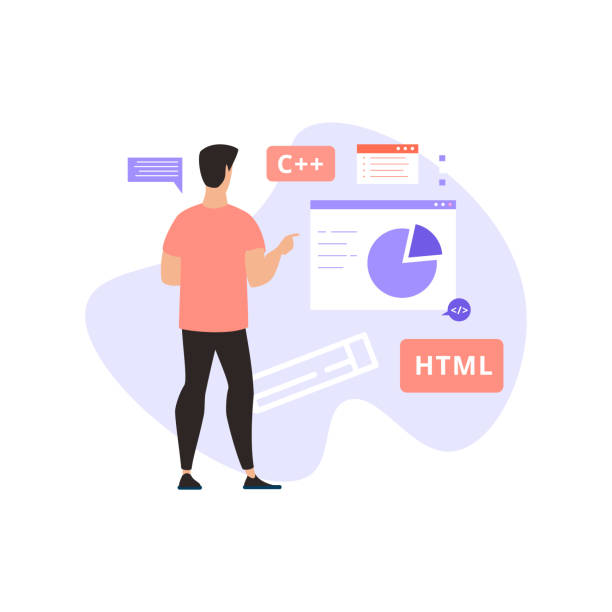
After the technical and visual foundation of your #PersonalWebsite is established, it’s time for its soul, which is the content.
#ContentProduction is a continuous and vital process for success in #PersonalWebsiteDesign.
Your content must not only deliver necessary information to the audience but also be engaging, unique, and value-creating.
This guide helps you formulate an effective content strategy.
First, remember that content comes in various types: text (blog articles, about me pages, service descriptions), images (portfolio, infographics), video, podcast, and more.
Diversity in content presentation can increase your website’s appeal and attract a wider audience.
One of the most powerful tools for attracting traffic and establishing credibility on a personal website is launching a blog. Blogging allows you to share your expertise, answer common questions, and connect with your audience.
This is a fantastic opportunity to publish #Educational and #News content in your field of activity.
For example, if you are a graphic designer, you can write about “Ten Top Tools for Logo Design” or “How to Build an Online Portfolio?” If you are a programmer, you can offer tutorials on programming languages or share your experiences from recent projects.
Blog content also significantly helps improve your website’s SEO, as search engines give more importance to websites that are regularly updated with fresh content.
When producing content, pay attention to #Keywords relevant to your field.
Use these words naturally in the text so that search engines can properly index your content.
Content quality is more important than quantity; longer and deeper articles that provide real value to the reader will perform better.
#ThoughtProvoking content that sparks discussion and interaction can also be very effective.
For instance, you can pose questions about recent challenges in your industry and ask readers to share their opinions.
Also, regularly updating old content and adding new information to it demonstrates your dynamism and expertise.
Finally, sharing blog content on social media and other platforms helps increase visibility and attract more traffic.
With a strong content strategy and adherence to it, your #PersonalWebsiteDesign will become a valuable source of information and a powerful tool for professional growth.
Search Engine Optimization (SEO) for Personal Websites
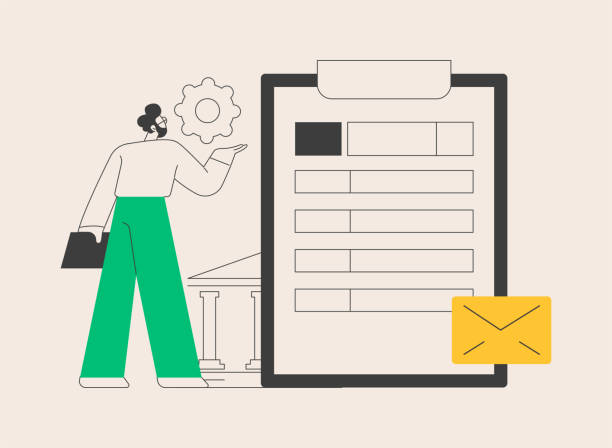
Even the best #PersonalWebsiteDesign will not be effective without being seen by its target audience.
This is where #SearchEngineOptimization (SEO) comes into play.
#SEO is a set of actions that help your website achieve a higher rank in search engine results like Google, thereby attracting more organic traffic.
This is a specialized and crucial aspect that requires continuous attention and updates.
The first step in SEO is keyword research.
You need to identify words that your target audience uses to find services or information related to your field.
Tools like Google Keyword Planner or Ahrefs can be helpful in this regard.
After identifying keywords, you should use them naturally in your website content, page titles, meta descriptions, and URLs.
Another important part of SEO is #OnPageSEO.
This involves optimizing elements within your website.
Ensure that page titles (H1 tags) and subheadings (H2, H3) contain relevant keywords.
Optimize images using appropriate Alt tags, as search engines cannot “see” images and require textual descriptions.
Also, URL structures should be simple, short, and include keywords.
Site loading speed is also a significant ranking factor for Google. Slow websites provide a poor user experience and rank lower.
Optimizing code, compressing images, and using a CDN (Content Delivery Network) can help increase speed.
#QualityAndUniqueContent also plays a fundamental role in SEO; long and comprehensive content that answers users’ questions receives more attention from search engines.
This is a guide to improving your site’s visibility.
Beyond On-Page SEO, #OffPageSEO is also important.
This involves building backlinks from other reputable websites to yours.
Backlinks act as a vote of confidence for your website and increase its authority with search engines.
You can generate natural and high-quality backlinks by producing valuable content, participating in relevant online forums, or connecting with bloggers and other website owners.
Also, being active on social media and sharing your content on these platforms can help increase traffic and send positive signals to search engines, although its direct impact on ranking might be less.
A personal website with strong SEO will have a greater chance of being seen among competitors and will provide more opportunities for your #ProfessionalGrowth and #AudienceAttraction.
This analytical approach shows you how to attract more visitors to your website and strengthen your online presence with the right strategies.
Website Launch and Continuous Maintenance
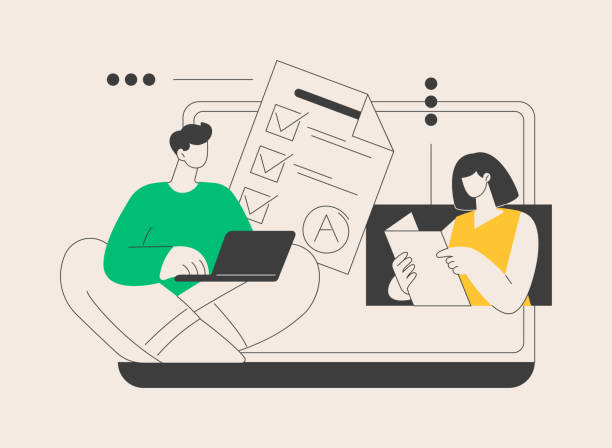
After the #PersonalWebsiteDesign process and initial content production are complete, it’s time for the exciting #Launch or “Go Live” phase.
This explanatory stage familiarizes you with the final steps to get your website online, as well as the importance of its continuous maintenance.
Before the official launch, you should carefully review all aspects of the website.
These include checking the correct functioning of links, proper display of images, contact forms, and compatibility with different browsers.
Testing the responsiveness of the website on various mobile and tablet devices is also of particular importance. Ensure that your website displays correctly on all screen sizes.
Also, a final check of content spelling and grammar, and optimizing page loading speed, are crucial steps before launch.
After ensuring the correctness of all items, you can make your website publicly available.
This usually involves connecting the domain to hosting and ensuring that the DNS (Domain Name System) is correctly configured.
After launch, your work has just begun! #ContinuousWebsiteMaintenance is highly important.
This includes regular software updates (such as WordPress core, themes, and plugins), site security monitoring, and regular data backups.
#SecurityUpdates are essential to protect your website against cyberattacks, and regular backups ensure that you can restore your website to its previous state if any issues arise.
This is important #News that you should always pay attention to, as security threats are constantly evolving.
Below, a website maintenance checklist guide is provided:
| Activity | Frequency | Description |
|---|---|---|
| Software Updates (CMS, Theme, Plugin) | Monthly/Whenever Updates are Released | Maintain Website Security and Performance |
| Data Backup | Weekly/Monthly (Depending on Changes) | Protect Data from Loss |
| Check for Broken Links | Monthly | Improve User Experience and SEO |
| Monitor Site Speed | Monthly | Ensure Fast Page Loading |
| Security Check | Quarterly | Scan for Vulnerabilities and Malware |
| Content Update | Continuous (Weekly/Monthly) | Attract New Audience and Improve SEO |
Furthermore, monitoring website performance using tools like Google Analytics and Google Search Console helps you analyze user behavior and gain a better understanding of how they interact with your site.
These tools provide valuable information about traffic sources, most visited pages, and keywords used to find your site.
Analyzing this data allows you to improve your content and SEO strategy and make more informed decisions for future website development.
Continuous maintenance and attention to detail are the keys to the long-term success of your personal website and ensure that this platform always remains a powerful tool for your branding and professional growth.
The Importance of Personal Branding and Website Impact
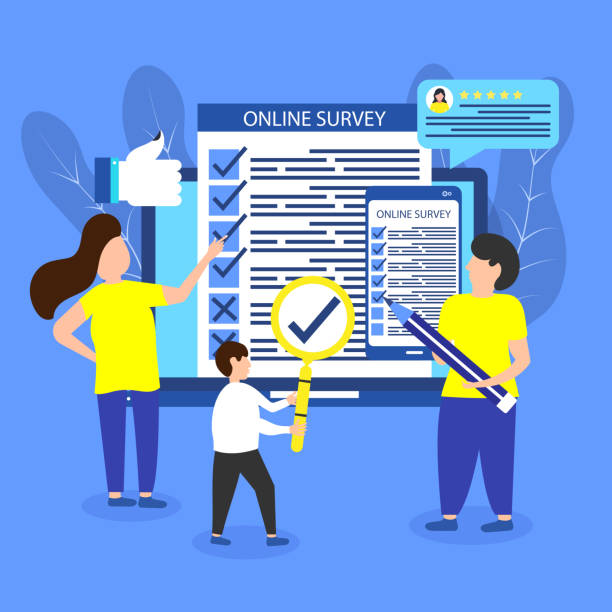
In today’s world, where competition is increasing in every field, #PersonalBranding holds unparalleled importance.
#PersonalWebsiteDesign is considered the core of this digital branding.
Your personal brand is, in fact, a collection of your unique experiences, skills, values, and characteristics that form in the minds of your audience.
A personal website allows you to narrate this story in a controlled and professional manner.
This is an analytical approach to understanding how you can build a strong and cohesive image of yourself using your website.
This platform is not only a place to showcase your achievements but also a space to express your personality and passion.
Your personal website can act as a powerful tool to #Differentiate yourself from competitors.
While many people only rely on social media profiles or paper resumes, having a comprehensive and professional website indicates your seriousness, commitment, and innovation.
This allows you to have complete control over your message and prevent any misunderstandings or incomplete information. You can include certificates, testimonials, and articles related to your field of work, which helps strengthen your credibility.
The visual design of the website, the choice of colors, fonts, and images, all must align with your personal brand’s visual identity to create a cohesive and memorable experience for visitors.
This is especially crucial for freelancers and professionals seeking to attract new clients.
Furthermore, a personal website is an excellent platform for #SharingYourInsightsAndThoughts.
Through blogging or “About Me” and “Work Philosophy” sections, you can share the values and principles you adhere to with your audience.
This type of #Engaging yet informative content creates a deeper connection with visitors and encourages them to be loyal to your brand.
You can share success stories, challenges, and lessons learned to show that you are not only an expert but also an experienced and understanding individual.
This not only helps attract new job opportunities or projects but also establishes you as a thought leader in your field.
Effective personal branding through #PersonalWebsiteDesign is a reliable way to achieve professional goals and build a bright future for yourself.
Are you worried about losing customers because you don’t have a professional e-commerce website?
Forget these worries with e-commerce website design by Rasawp!
✅ Significant increase in sales and visitor-to-customer conversion rate
✅ Professional and user-friendly design that gains customer trust
⚡ Get a free consultation from Rasawp
Income Opportunities and Future Website Development
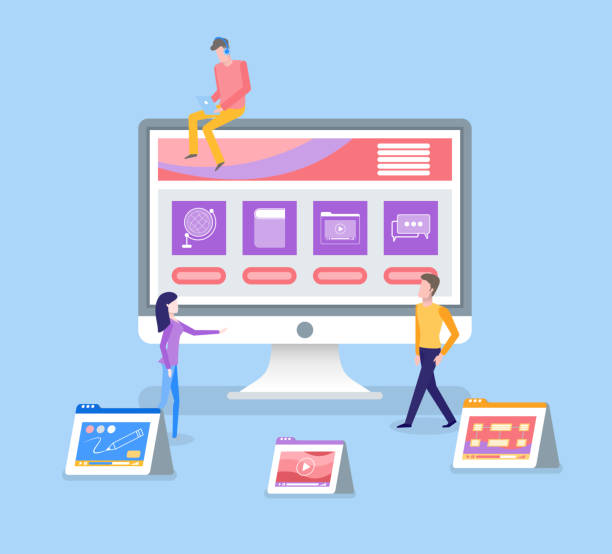
After your personal website is successfully launched and starts attracting traffic, it’s time to explore #IncomeOpportunities and plan for its #FutureDevelopment.
This section explores the #Analytical and #Engaging aspects of website monetization and shows you how to maximize your website’s potential.
Many people assume that a personal website is solely for displaying a portfolio, while it can actually become a sustainable source of income.
One of the most common methods is offering #SpecializedServices.
If you are an expert in a field, you can offer your services (such as consulting, design, programming, writing) directly to clients through your website.
This provides direct communication with clients and eliminates intermediaries.
Another method is #SellingDigitalOrPhysicalProducts.
If you create e-books, online courses, design templates, or even artistic products, you can sell them directly through your website.
Setting up a small store using plugins like WooCommerce for WordPress is relatively easy.
Affiliate Marketing is also an attractive option; in this method, you promote others’ products or services on your website and receive a commission for each successful sale or referral.
This can include product reviews, writing recommendation articles, or placing banner ads.
For bloggers and content creators, income through advertising (like Google AdSense) or sponsorship (sponsored posts) is also possible, although generating significant income from these methods requires a high volume of traffic.
Offering #PaidContent or #Membership for access to exclusive content, advanced training courses, or a community of professionals can also be an effective income model.
This is particularly suitable for specialized and high-value content.
In the future, you can expand your website by adding new functionalities such as online forums, interactive tools, or even a dedicated section for hosting webinars.
For #DesigningAPersonalWebsite with the goal of monetization, you need a precise analysis of the market and audience needs.
With a smart strategy and continuous effort, your website can transform not only into a tool for showcasing skills but also into an engine for financial and professional growth.
This #Educational perspective helps you discover the hidden potentials of your website and turn them into reality.
Integration with Social Networks and Communication Tools
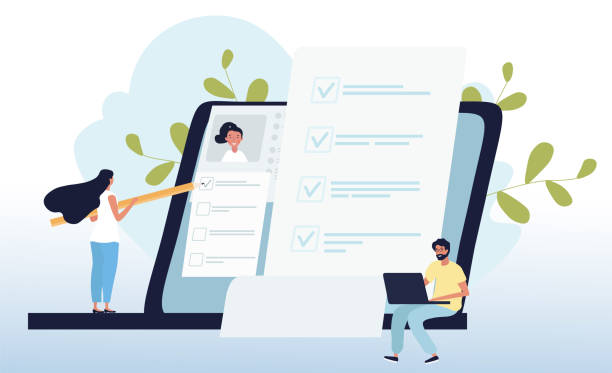
A successful #PersonalWebsiteDesign is not limited to the website itself; rather, it requires intelligent integration with other online platforms.
#SocialNetworks and communication tools play a significant role in expanding your reach, attracting more traffic, and creating engagement with your audience.
This is a practical guide for connecting your website to the broader digital ecosystem.
The first and most important step is adding social sharing buttons to your website content.
These buttons allow visitors to easily share your blog articles, projects, or other content with their friends and colleagues on platforms like LinkedIn, Twitter, Instagram, or Facebook.
This virally increases the visibility of your content and brings referral traffic to your website.
Furthermore, you should include direct links to your social media profiles on your website, usually in the footer or sidebar.
This helps visitors follow you on other platforms and stay informed about your latest activities and news.
Integrating social media feeds (such as Instagram feed or recent tweets) directly into the website can help keep your site live and dynamic and showcase fresh content regularly.
This is particularly appealing for artists’ and photographers’ websites.
Also, using communication tools such as contact forms, email, and direct links to messengers (like WhatsApp) in the “Contact Us” section facilitates the communication process for visitors.
To improve engagement, you can use the commenting feature on your blog and actively respond to user comments.
Using commenting plugins like Disqus or even WordPress’s default commenting system can help create an active community around your content.
Adding #EmailNewsletter functionality and collecting visitor emails is a powerful strategy for direct marketing and informing about new content, services, or special offers.
This is a specialized tool for maintaining communication with your loyal audience.
Finally, you can connect your personal website to analytical tools like Google Analytics to monitor user behavior on both platforms (website and social media) and optimize your strategies based on real data.
This is a comprehensive approach to strengthening your online presence through intelligent integration in #PersonalWebsiteDesign and other digital channels.
Frequently Asked Questions
| Question | Answer |
|---|---|
| Why should we have a personal website? | A personal website helps you build your personal brand, showcase your skills and portfolio, connect with your audience, and gain new career opportunities. |
| What steps should be taken to design a personal website? | The steps include defining goals, choosing a domain name and hosting, selecting a platform (e.g., WordPress), designing the user interface, content creation, search engine optimization (SEO), and launching. |
| Do I necessarily need to know coding to design a personal website? | No, by using Content Management Systems (CMS) like WordPress or Website Builders like Wix and Squarespace, you can design your website without needing to code. |
| What is a Domain Name and how do I choose one? | A domain name is your website’s address on the internet (e.g., yourname.com). It’s best to choose a name that is short, memorable, relevant to you or your business, and has an appropriate extension (like .com, .ir). |
| What is Hosting and why do I need it? | Hosting is a space on the internet where all your website’s files and information (like images, texts, codes) are stored to be always accessible to users. Without hosting, your website will not be visible. |
| What should a personal website’s content include? | Content usually includes an About Me page, portfolio, services/skills, blog (articles), contact information, and a contact form. |
| How can I optimize my personal website for search engines (SEO)? | By using relevant keywords, producing quality content, improving website loading speed, being mobile-responsive, building internal and external links, and optimizing title and description tags. |
| Why is Responsive Design important for a personal website? | Responsive design ensures that your website displays correctly on all devices (computers, tablets, mobile phones) and provides a good user experience, which is also important for SEO. |
| What should I do for personal website security? | Use an SSL certificate (HTTPS), regularly update the platform and plugins, use strong passwords, perform regular backups, and install a firewall or security plugins. |
| How can I increase my personal website’s traffic (visitors)? | Through SEO optimization, content marketing (blogging), social media activity, email marketing, online advertising, and collaborations with other websites. |
And other advertising services from Rasaweb Advertising Agency
Smart Social Media: A professional solution for customer acquisition focusing on user experience customization.
Smart Brand Identity: A combination of creativity and technology to increase click-through rates by customizing user experience.
Smart Marketing Automation: An innovative service for improving SEO ranking through key page optimization.
Smart Link Building: A fast and efficient solution for customer acquisition focusing on marketing automation.
Smart Custom Software: A combination of creativity and technology for analyzing customer behavior through user experience customization.
And over a hundred other services in the field of internet advertising, advertising consultation, and organizational solutions
Internet Advertising | Advertising Strategy | Advertorial
Sources
- How to Build a Personal Website?
- Principles of Successful Website Design
- Important Tips for Personal Websites
- Best Tools for Web Design
? Ready to transform your business in the digital world? Rasaweb Afarin Digital Marketing Agency, by offering comprehensive and innovative solutions, is with you on the path to success. For sustainable growth, from **modern UI website design** to SEO strategies and targeted advertising campaigns, contact us.
📍 Tehran, Mirdamad Street, next to the Central Bank, South Kazeroon Alley, Ramin Alley, No. 6

